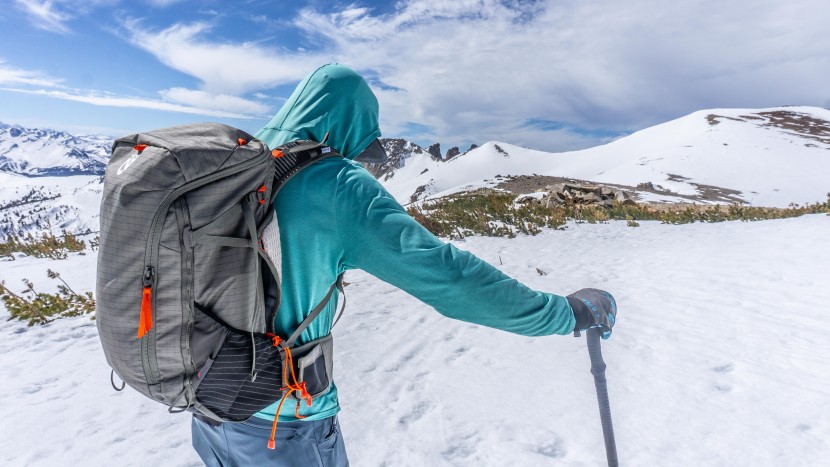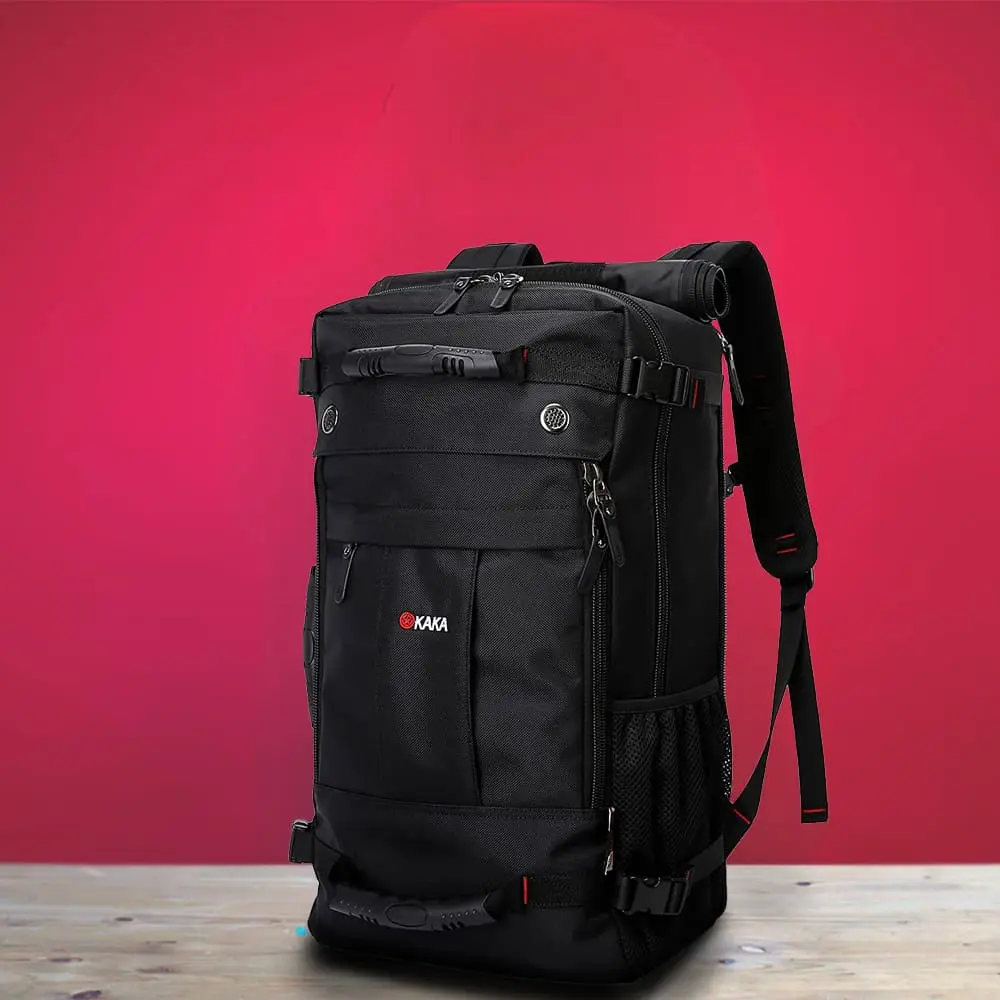Are you tired of lugging around a heavy, uncomfortable backpack on your camping trips? Finding the best travel backpack for camping can make all the difference in how much you enjoy your adventure.
The right backpack will keep your gear organized, comfortable, and easy to carry, so you can focus on the experience—not the weight on your shoulders. You’ll discover what features to look for and which backpacks stand out from the rest.
Keep reading to find the perfect match for your next outdoor trip!

Credit: www.outdoorgearlab.com
Choosing The Right Backpack
Picking the right backpack is key for a good camping trip. It helps carry your gear comfortably and safely.
Consider your trip length, weather, and what you need to bring. These affect your choice a lot.
Capacity And Size
Backpacks come in many sizes. Choose one that fits your trip length and gear amount.
Small backpacks hold about 20-35 liters. They fit short trips and light packing. Large backpacks hold 50 liters or more. They fit longer trips and more gear.
- 20-35 liters: 1-2 day trips
- 35-50 liters: 2-4 day trips
- 50+ liters: 5+ day trips
Weight Considerations
Light backpacks reduce strain on your back. Choose one that feels good when loaded.
Check the backpack’s empty weight. Lighter models help you carry more without extra effort.
- Look for lightweight frames
- Try on backpacks with weight before buying
- Balance weight evenly to avoid pain
Material And Durability
Strong material keeps your gear safe. Look for water-resistant fabrics to protect from rain.
Ripstop nylon and polyester are common durable materials. Check the quality of zippers and straps too.
- Choose water-resistant or waterproof fabric
- Look for reinforced stitching
- Strong zippers and buckles last longer
Essential Features For Camping
Choosing the right backpack for camping is important. It helps you carry all your gear comfortably and safely.
The best travel backpack for camping has features that protect your belongings and support your body during long hikes.
Water Resistance
A camping backpack should keep your items dry in rain or wet conditions. Water resistance helps protect your gear.
Look for backpacks made with water-resistant fabrics or those that include a rain cover for extra protection.
- Durable water-resistant materials like nylon or polyester
- Sealed or covered zippers to prevent water entry
- Included rain cover for heavy rain
Compartments And Organization
Good organization helps you find your items quickly. Multiple compartments keep gear sorted and easy to access.
Look for backpacks with separate pockets for water bottles, sleeping bags, and small items.
- Main compartment for large gear
- Side pockets for water bottles or tools
- Small zippered pockets for keys and electronics
- External loops or straps for extra gear
Comfort And Support
Camping trips can be long, so comfort is key. A backpack should fit well and support your back and shoulders.
Look for padded straps, adjustable fits, and a strong frame that holds the pack close to your body.
- Padded shoulder straps to reduce pressure
- Adjustable hip belt to carry weight on hips
- Ventilated back panel to reduce sweat
- Sturdy frame to keep shape and support load
Types Of Travel Backpacks
Choosing the right backpack for camping makes your trip easier. Different backpacks fit different needs and trips.
We will look at three common types of travel backpacks. Each has its own design and uses.
Daypacks
Daypacks are small backpacks for short trips. They usually hold less than 30 liters of gear.
They are light and easy to carry. Ideal for hiking, city tours, or quick camping trips.
- Lightweight and compact
- Easy access pockets
- Good for carrying snacks, water, and small items
- Not suitable for heavy or large gear
Internal Frame Backpacks
Internal frame backpacks have a frame inside the bag. This frame helps support the weight.
They are good for rough terrain. The bag fits close to your body for better balance.
- Supports heavy loads well
- Good for hiking and camping trips
- Close fit to the back
- Often have many compartments
External Frame Backpacks
External frame backpacks have a visible frame outside the bag. The frame helps carry very heavy loads.
They keep the load away from your back. This allows better air flow and comfort on hot days.
- Good for carrying bulky items
- Better ventilation on the back
- Heavier and less flexible
- Often used for long camping trips
Top Backpack Brands For Camping
Choosing the right backpack makes camping easier and more fun. Some brands are known for making backpacks that last.
These brands focus on comfort, space, and durability. They fit well and carry all your gear safely.
Osprey
Osprey backpacks are popular for their strong materials and smart design. They offer good support for long hikes.
Many models have adjustable straps and many pockets. This helps campers organize their gear well.
Deuter
Deuter is known for comfortable and reliable backpacks. Their bags fit well and are good for carrying heavy loads.
They use durable fabrics and have good ventilation. This keeps your back cool while hiking.
Gregory
Gregory backpacks focus on comfort and balance. They shape their packs to fit the body well.
The designs include many pockets and easy access to gear. This brand is good for both short and long trips.
The North Face
The North Face offers backpacks that are tough and useful. Many campers trust this brand for outdoor gear.
Their packs have strong zippers and water-resistant materials. They keep your stuff safe in all weather.
Rei Co-op
REI Co-op backpacks give good value with solid quality. They design their packs for many types of camping.
The backpacks have useful features like rain covers and adjustable straps. They are made to last long.
Packing Tips For Camping Trips
Packing well is important for a good camping trip. A good backpack helps carry your gear comfortably.
These tips will help you pack smart and enjoy your outdoor adventure.
Weight Distribution
Keep the heaviest items close to your back and near the middle of the backpack. This balance makes carrying easier.
Distribute weight evenly on both sides to avoid strain on one shoulder.
- Pack heavy gear like water and food near your spine
- Place medium-weight items around the heavy gear
- Keep light items at the top and outer pockets
Essential Gear To Include
Bring items that are necessary for safety and comfort. Avoid packing too much extra stuff.
- Water bottles or hydration system
- First aid kit
- Map and compass or GPS device
- Weather-appropriate clothing
- Food and cooking tools
- Sleeping bag and tent
Check your gear before packing to make sure you have everything.
Keeping Items Accessible
Put things you need often in easy-to-reach spots. This saves time and effort while camping.
- Store snacks and water in outer pockets
- Keep a flashlight and first aid kit near the top
- Place maps and compass in a quick-access pocket
- Organize small items in separate pouches
Plan your packing layout before you start filling the backpack.

Credit: pangolinswithpacks.com
Budget Vs Premium Backpacks
Choosing the best travel backpack for camping depends on your budget. Budget backpacks cost less but offer basic features. Premium backpacks cost more and include advanced features.
Both types have advantages. Knowing the differences helps you pick the right backpack for your needs.
Features In Budget Options
Budget backpacks focus on simple design and function. They use basic materials that are lightweight but less durable. These backpacks often have fewer pockets and less padding.
They are good for short trips or casual camping. Budget backpacks may not last long under heavy use but offer good value for the price.
- Lightweight materials like nylon or polyester
- Basic frame or no frame
- Limited storage compartments
- Simple straps with minimal padding
- Water-resistant but not fully waterproof
Benefits Of Premium Models
Premium backpacks use strong and durable materials. They often include a sturdy frame for better support. These models have many pockets and adjustable straps for comfort.
Premium backpacks protect your gear better and last longer. They suit long trips and rough conditions well.
- High-quality fabrics like ripstop nylon
- Internal or external frame for support
- Multiple compartments for organized packing
- Thick, adjustable padded straps and hip belts
- Waterproof or highly water-resistant materials
- Additional features like hydration pack compatibility
Backpack Maintenance And Care
Taking care of your travel backpack is important to keep it strong and clean. Good maintenance helps your bag last longer and work well on camping trips.
Simple care steps keep your backpack ready for your next adventure. Cleaning and storing it properly are key parts of this care.
Cleaning Tips
Clean your backpack after every trip to remove dirt and stains. Use mild soap and cold water to avoid damage. Avoid harsh chemicals that can weaken the fabric.
Focus on zippers, straps, and pockets. Gently scrub dirty spots with a soft brush or cloth. Let the backpack air dry fully before storing.
- Empty all pockets before cleaning
- Use mild soap and cold water
- Clean zippers with a soft brush
- Air dry in shade, avoid direct sun
- Do not machine wash or dry
Storage Recommendations
Store your backpack in a cool, dry place to prevent mold and mildew. Avoid damp or hot areas that can damage materials. Keep it loosely packed to keep its shape.
Hang the backpack or lay it flat. Do not store heavy items on top. Check your bag occasionally to ensure it stays clean and dry.
- Store in a dry, cool spot
- Keep away from direct sunlight
- Hang or lay flat without folding
- Do not compress with heavy objects
- Inspect regularly for moisture or pests

Credit: outdoorgears.in
Frequently Asked Questions
What Features Make A Backpack Best For Camping?
The best camping backpacks offer durability, water resistance, and ample storage. Adjustable straps and ventilation enhance comfort. Multiple compartments help organize gear efficiently. Lightweight materials reduce carrying strain. Overall, these features ensure convenience and comfort during outdoor adventures.
How Much Capacity Should A Camping Backpack Have?
For short trips, 30-50 liters capacity is ideal. For longer camping, opt for 50-70 liters. This size accommodates essentials like food, clothing, and gear. Choosing the right capacity avoids overpacking and ensures comfort while hiking.
Are Hiking Backpacks Suitable For Camping?
Yes, hiking backpacks often suit camping needs. They provide sturdy support, ventilation, and multiple pockets. However, ensure they have enough capacity for camping gear. Check for features like hydration compatibility and weather resistance for best results.
What Material Is Best For A Travel Camping Backpack?
Nylon and polyester are popular for their durability and water resistance. Ripstop fabrics prevent tears, extending backpack life. Lightweight materials improve comfort on long hikes. Look for backpacks with reinforced stitching for extra strength.
Conclusion
Choosing the right travel backpack for camping matters a lot. It affects comfort and convenience during your trip. Consider size, weight, and features carefully. Think about weather conditions and terrain. A good backpack makes camping more enjoyable. Test different options if possible.
Read reviews and ask fellow campers for advice. Remember, a well-chosen backpack keeps your gear safe. It also ensures you have a great camping experience. Happy camping and safe travels!